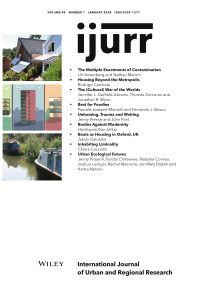The remediation and redevelopment of industrially contaminated land are complex challenges for urban regions worldwide. Yet the literature on urban brownfields mostly addresses this as a technical problem through dichotomic and anthropocentric terms, contrasting the passive and negative role of the contamination as a toxic entity in the ground with the active and positive roles assigned to human actors such as planners, developers and communities. This article contests this prevalent view by tracing in detail debates concerning the remediation of three highly contaminated military-industrial brownfield sites in the Tel Aviv metropolitan region. Drawing on notions of ontological multiplicity and enactment from science and technology studies and on qualitative analysis of a vast database of planning protocols and court hearings alongside interviews with key stakeholders, we uncover how contamination is enacted in multiple ways as mobile/immobile, unified/fragmented, remediable/irremediable. Furthermore, following one of our field’s inherent controversies—whether to fully map the contamination prior to planning the sites—the article highlights the attempts to regulate this multiplicity and replace it with a single coherent contamination. By acknowledging the multiple enactments of contamination, our approach offers a more nuanced understanding that could help stakeholders rethink the remediation and redevelopment of urban brownfields beyond simplistic technical solutions or neoliberal policy imperatives.
Details
Written by:
Uri Ansenberg & Nathan Marom
Digital Object Identifier (DOI)
https://doi.org/10.1111/1468-2427.13220
About DOI

